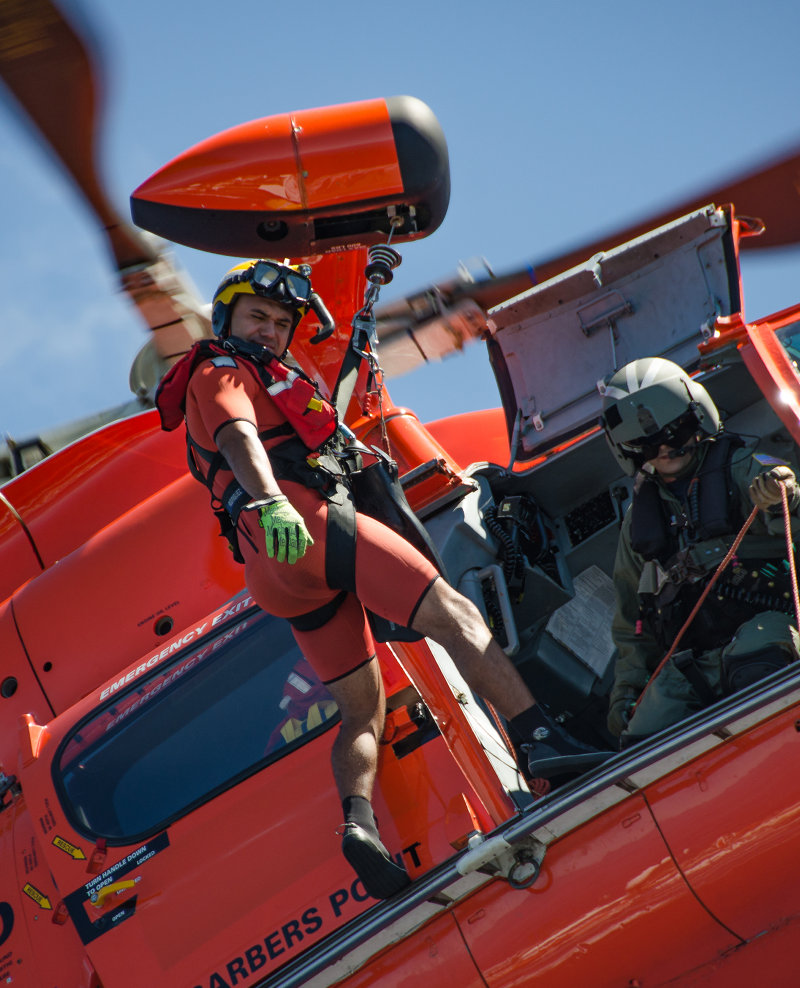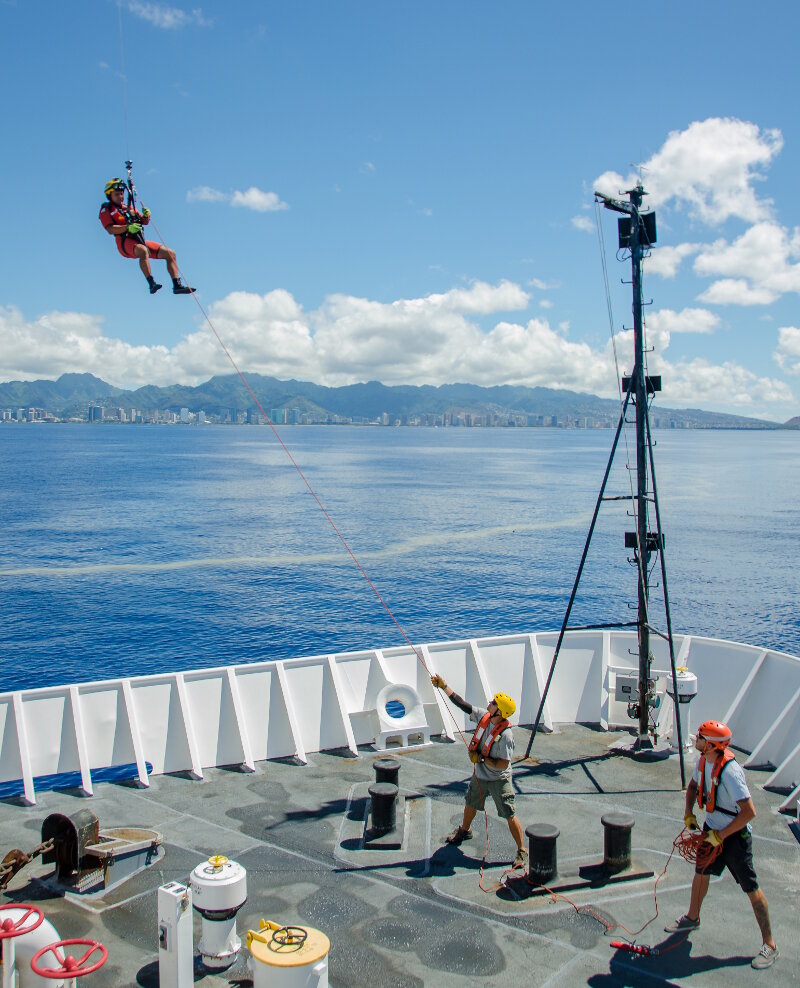NOAA Ship Okeanos Explorer departed Ford Island in Pearl Harbor, Hawaii, this morning to begin the Deep-Sea Symphony: Exploring the Musicians Seamounts expedition. Once outside of the harbor, the ship made a short transit to the waters off Honolulu, Hawaii, to assist the U.S. Coast Guard (USCG) with a helicopter training drill. The mission team watched on as two USCG helicopters took turns deploying a rescue swimmer and rescue basket down to the ship’s bow. The drills were a success and the Okeanos team is continuing to transit north of Oahu towards the first dive site at the “Tropic of Cancer” seamount. The team is looking forward to the expedition and to learning more about this largely unexplored area that lies just outside the U.S. Exclusive Economic Zone. While small portions of the Musicians Seamount group have been previously mapped during transits, dedicated mapping operations began during the August 2017 Okeanos Explorer telepresence mapping expedition. Our current expedition will continue mapping efforts during overnight transits and we will conduct the first exploration using remotely operated vehicles to increase understanding of this fascinating region. Be sure to tune in to see what we discover!

